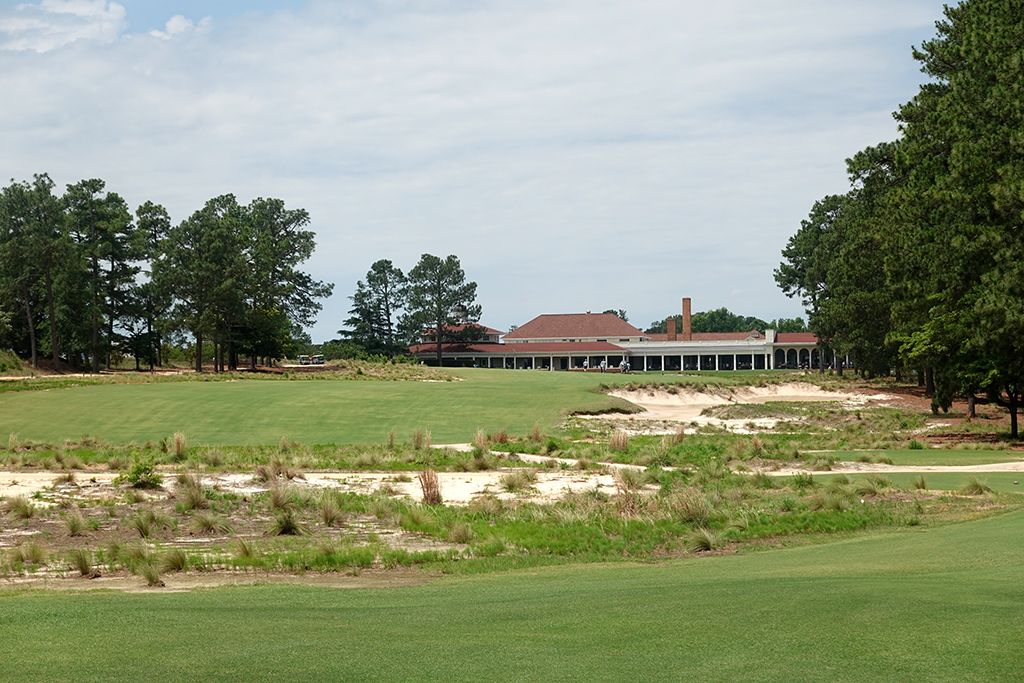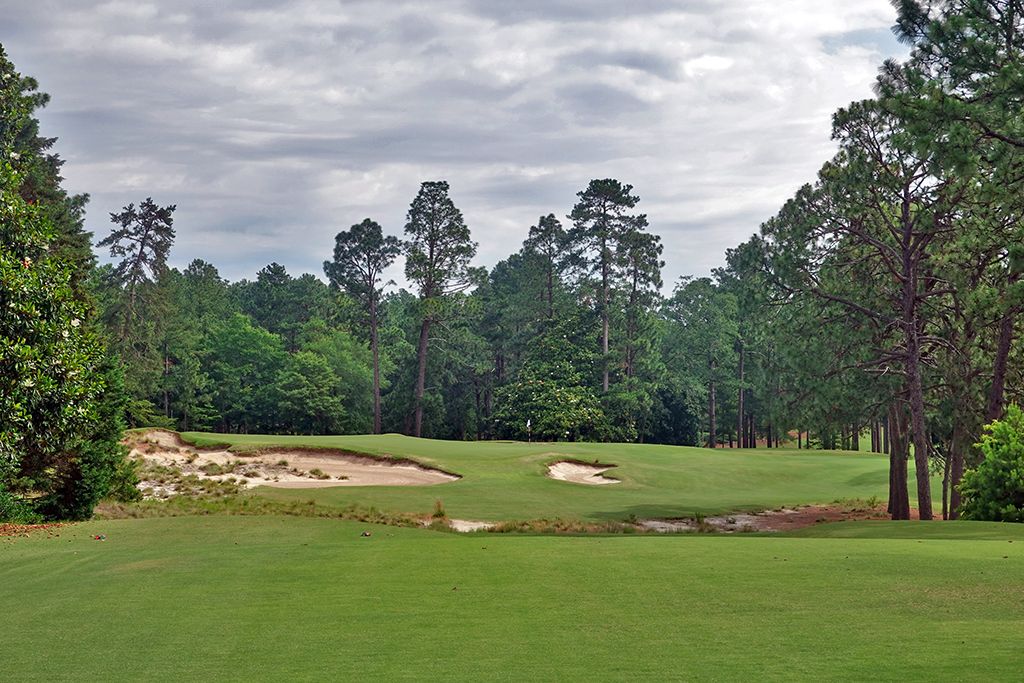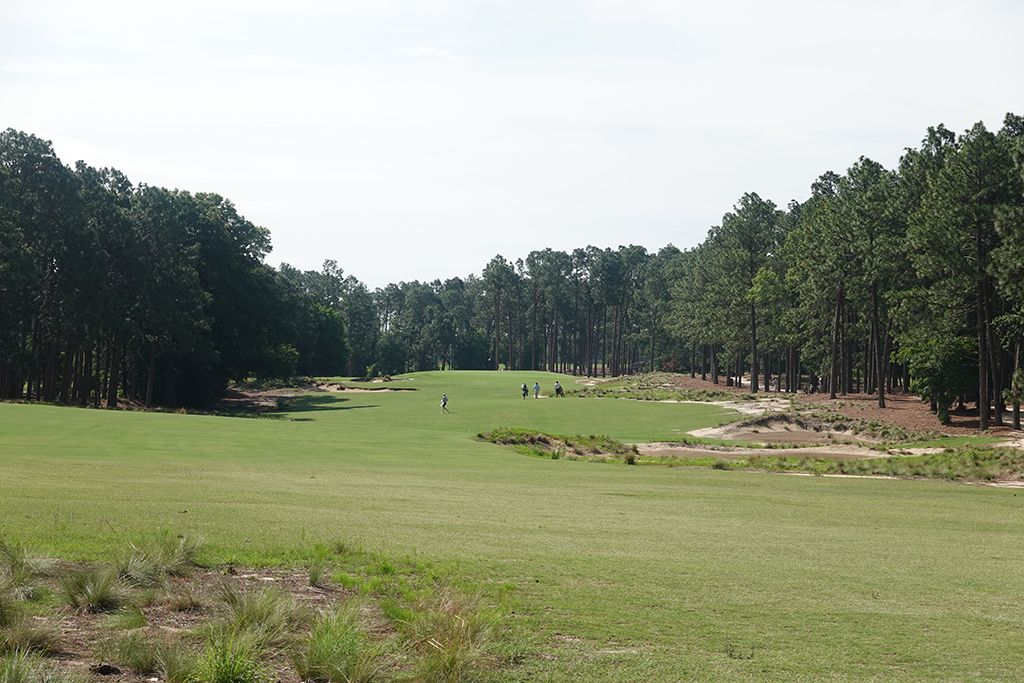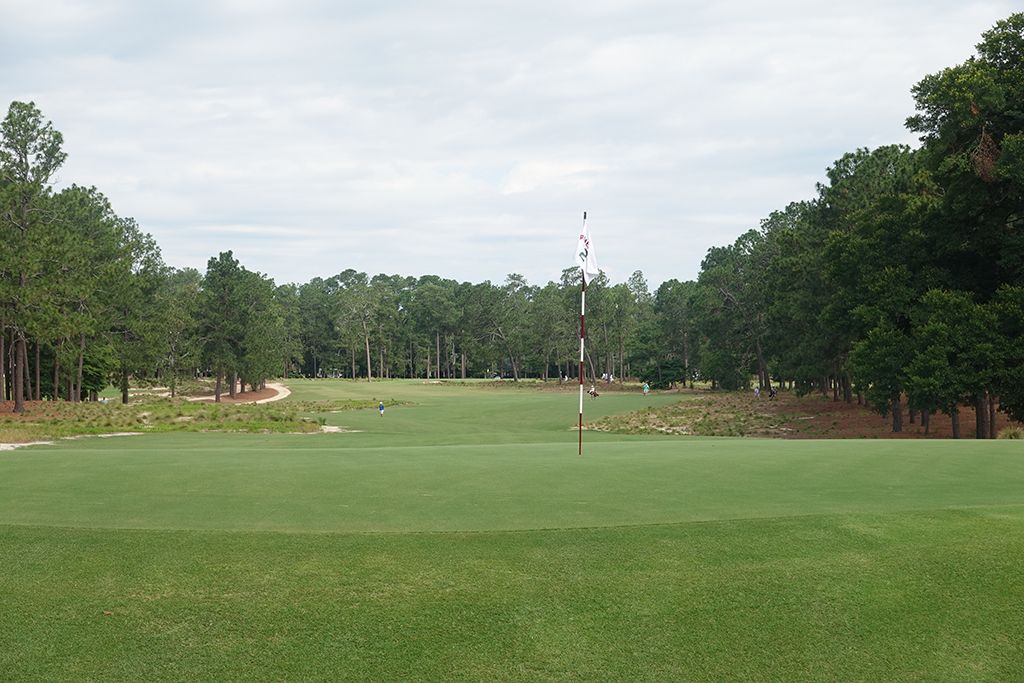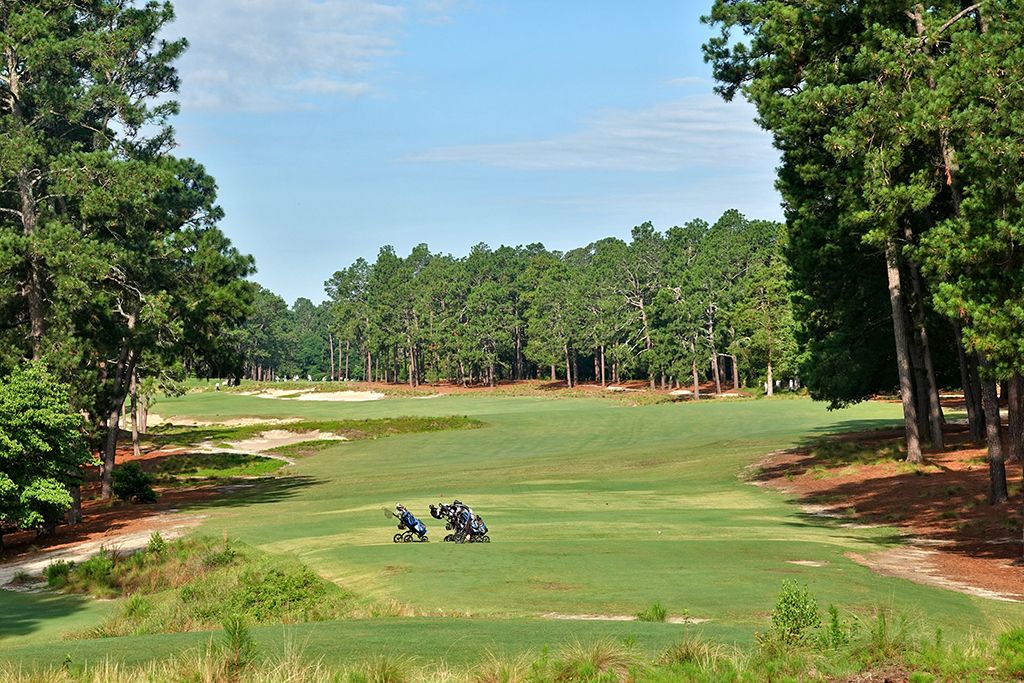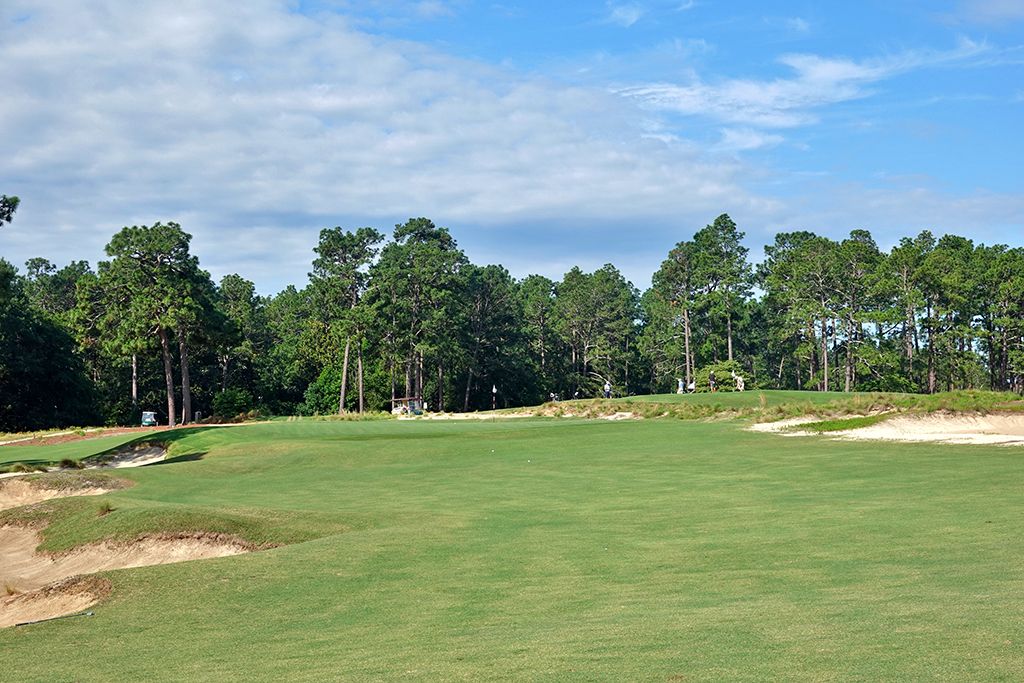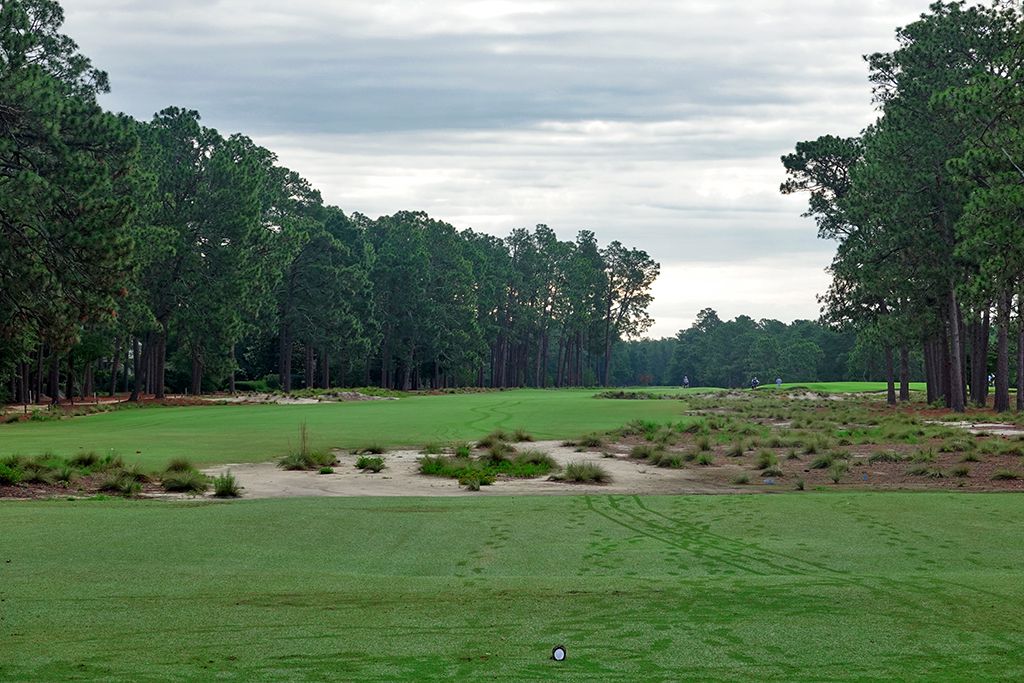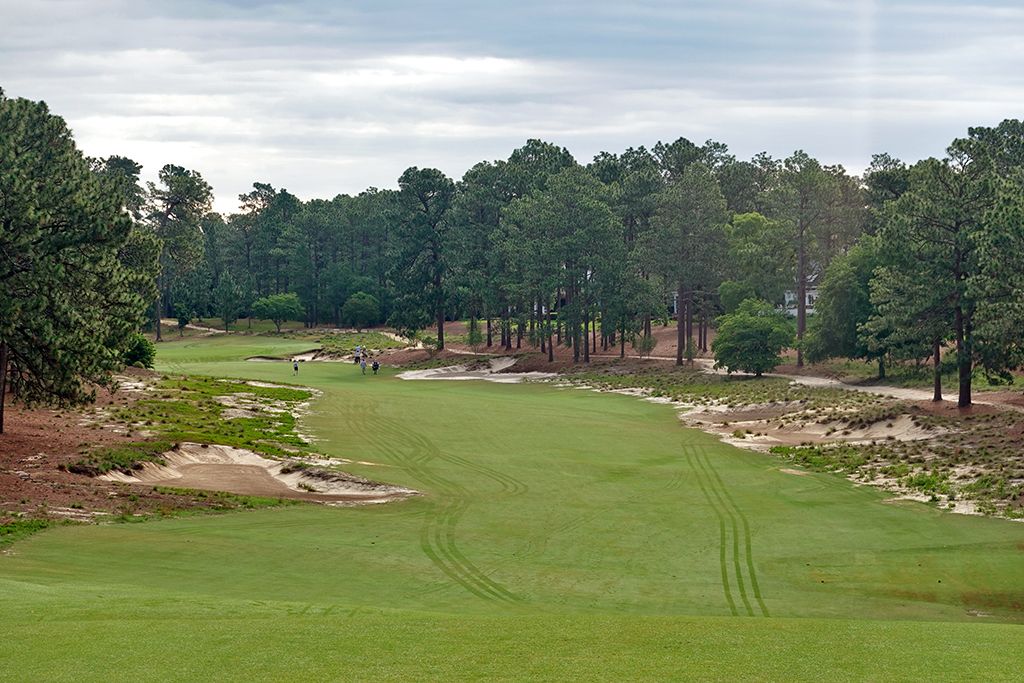 Golf Course Review by: Bill Satterfield
Golf Course Review by: Bill Satterfield
Rankings:
The Takeaway: Pinehurst is rivaled only by Pebble Beach as the most historic championship course in America with public access. While the terrain isn’t as engaging as other elite tracks, no other course tests a player’s approach shots and short game more than No.2. Grade A-
Quick Facts
Designer: Donald Ross in 1907 and Ben Crenshaw/Bill Coore in 2011
Cost: $329.00 - $389.00 Click for current rates
Phone Number: (910) 295-6811
Course Website: Official Website - Visit Pinehurst Resort No.2's official website by clicking on the link provided.
Directions: Get here! - 1 Carolina Vista, Pinehurst, North Carolina 28374 – UNITED STATES
Photos: See additional photos of Pinehurst Resort No.2
What to Expect: The history at Pinehurst needs little introduction. From being the cradle of American golf to Payne Stewart’s famous U.S. Open win to being the first course to host the men’s and women’s U.S. Open back to back, the No.2 course at Pinehurst is a bucket list course for any golf aficionado. No.2 features some of the strongest shot values on the planet and there is no part of your game that it doesn’t test. From punishing length to deadly accuracy to exacting finesse, you have to have your ‘A’ game going all day to conquer the mighty No.2. Its famous domed greens look big, but the effective landing areas are small with the slightest miscalculation being punished to the fullest extent of the law. If there is some forgiveness to be had it is off the tee as the fairways are more generous now than before the Coore & Crenshaw renovation. Instead of the thick rough found in the previous century, fairways were expanded and waste areas were exposed outside of the short grass. When the course is running firm though, the lack of rough can result in precarious lies where luck is the biggest factor after a ball chases through the fairway. There isn’t a lot of movement in the terrain at No.2 except for a brief stretch on each nine, which is nice for walking but not quite as engaging while playing. Speaking of walking, there are no carts on No.2 with players being required to walk with, or without, a caddie. Ultimately Pinehurst rides its history to its lofty rankings on the major magazines lists, but is still worth dropping the coin on for one loop around while making sure to take some of the resort’s other courses in as well.
By the Numbers
| Tees | Par | Yardage | Rating | Slope |
|---|---|---|---|---|
| U.S. Open | 70 | 7588 | 76.5 | 138 |
| Blue | 72 | 6961 | 73.7 | 133 |
| White | 72 | 6307 | 70.7 | 126 |
| Green | 72 | 5771 | 68.0 | 123 |
| Red (Women) | 72 | 5302 | 70.3 | 127 |
Individual Hole Analysis
Signature Hole: 18th Hole – 451 Yard Par 4 – Standing on the final tee at Pinehurst there is a lot going on. There is the emotion of playing the last hole of the day, the challenge of a 451 yard uphill two-shotter, the history of those that have come before you, and tons of trouble to find as a massive waste bunker crosses in front of the tee and works its way up the right side. Bunkers provide a wall of defense in front of the elevated green and demand a high, soft approach shot. The 18th hole is a perfect example of what Pinehurst is all about. Demanding, yet fair, tee shots followed up by a more demanding approach shot. #2 is simply a shot makers course, which by #18 you will be well aware of!
Best Par 3: 9th Hole – 191 Yards – When you come to Pinehurst you should have one expectation above anything else; challenging greens. The course that is perhaps the most demanding approach shot course in the world boasts green complexes that will test every aspect of your short game and the 9th is a good example of it. The right third of the green slopes off the edges while the rest of the green is mostly surrounded by bunkering. Anything that doesn't find the putting surface will require exacting work to save par. The long, thin bunker short of the right side is a lousy spot to be if the pin is on the left third of the green as it leaves an awkward distance to hit precisely from the sand. This hole is one of the most striking visual holes since the restoration.
Best Par 4: 8th Hole – 502 Yards – A very strong two-shotter, the 8th plays as a par four from the tips and a par five from the closer tees. The tee shot plays from a natural rise in the terrain down to a sunken fairway before climbing back up to the raised greensite. Tee shots up the left side that bring the trees into play but can be rewarded with a speed slot that will generate some extra distance. The classic Ross domed green here makes it difficult to get close to the flag, especially if you are trying to get close to a rear pin placement when balls can trickle off the back and leave a brutal up and down scenario. While the front of the green is open for approaches on the ground or in the air, it is one of the most challenging greens to hit in regulation and a cracker of a hole.
Best Par 5: 5th Hole – 576 Yards – For years the 5th hole at Pinehurst #2 was one of the most celebrated par fours in North Carolina, and with good reason. However, the hole played as a par five in the original design and up until the 1951 Ryder Cup when it was converted to a brutal two-shotter. It was lengthened and reintroduced as a par five leading into the 2014 U.S. Opens while the 4th hole, formerly a par five, was reduced to a par four. This big par five doglegs to the left around a waste area while trees line the right side. The fairway slopes from right to left and it will take about 300 yards to clear the bunker on the left side if you try to shorten the hole. The green complex is one of the most brilliant designs anywhere and requires absolute precision when playing it. The edges around the green are quick to repel shots that don't approach with sufficient energy and bunkers lie in wait to create more grief. From the lower bunker on the left there is hope of getting up and down with a spinning sand shot that makes it high enough onto the putting surface to hold, but from the high bunker on the right it will take Tour level skill to get up and down. There are no pin placements within seven paces of the perimeter of the green due to the severity of the slope and it will take all of your game and strategy to come out on top here.
Birdie Time: 3rd Hole – 387 Yard Par 4 – There are plenty of punishing holes at Pinehurst, so taking advantage of this early gift is paramount. The hole plays across flat ground to a generous fairway where only 250 yards is needed to stay short of the fairway bunker on the right and set up a wedge into the green. Aggressive players may try to clear the fairway bunkers and drive it up to a chipping area left of the green. The green isn't as severe as others on the course so players can attack pins with more confidence. During the 2014 U.S. Open this hole yielded more birdies than any other, except for the par five 4th (which used to be a par four).
Bogey Beware: 4th Hole – 529 Yard Par 4 – Donald Ross said that championship golf courses, like Pinehurst #2, should “call for long and accurate tee shots, accurate iron play, precise handling of the short game, and finally, consistent putting.” To walk away with a par at the lengthy second hole, at least three of those elements better be spot on. Played as a par five prior to the 2014 U.S. Open, the 4th now stands as Pinehurst's most difficult par four. Tipping out well over 500 yards, the 4th plays from an elevated tee to a fairway that steadily turns to the left the entire way to the hole. Waste bunkers are found randomly along the outside of the fairway in conjunction with the 1940s version of the hole and more bunkers are featured left and right of the green. The putting surface tilts hard right to left and acts as the hole’s biggest defense; as if the length wasn't tough enough already. The swell in front of the green is a well used collection area for approaches that don't come in with sufficient juice to climb onto the putting surface. As a par five, it was a hole players looked at as a possible scoring opportunity; as a par four it is a bogey magnet.


